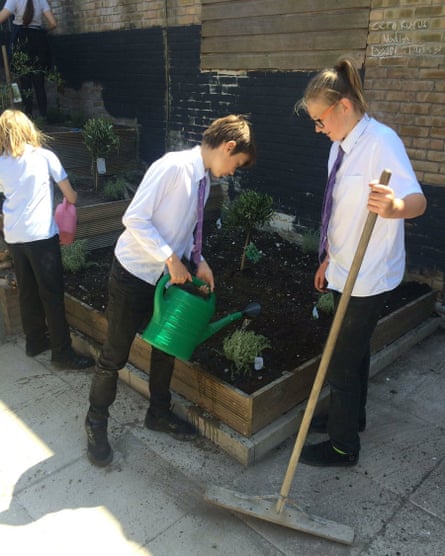I had an interest in the great outdoors from a very young age. I can remember as a child watching mesmerised as hundreds of baby spiders emerged and spread themselves bravely across a web. I wanted to grow veg but my parents didn’t know how, so I threw carrot seeds in the ground recklessly, hoping for the best. While I tried to fit in as best I could at school, my apparently not-very-cool interest withered - until my late twenties, when I began dabbling with growing veg in my back garden.
Even now, nudging into my forties, I still regularly hear people say “you’re a gardener? Aren’t you too young to be doing that?” While I increasingly enjoy hearing the words; “aren’t you too young?”, the idea that “this” should only be enjoyed by an older generation both amuses and grates.
Thankfully things are starting to change, with a growing number of initiatives designed to create a greater awareness and fostering a fun connection with the natural world. Grow Wild’s Youth Takeover exhibition launching this Saturday (June 24) and running until July 9 at Summerhall in Edinburgh is a great example. It’s part of Grow Wild, the national outreach initiative of Kew Gardens that is the UK’s biggest-ever wildflower campaign. Young artists between the ages of 12 and 25 were asked to outline how they would highlight through art the plight of wild flowers and their native meadow habitats (97% of which have been lost since the 1930s), and the bees, butterflies, and other insects which rely on them for food. The resulting artwork, which covers everything from poetry and embroidery through to sculpture and steel band music makes for a vibrant wildflower homage.

The 12 successful applicants whose work is being displayed at Summerhall were each given £500 to create their artwork for the exhibition. Freya Cohen, one of the featured artists, highlights the plight of pollinators in her art. “I wanted to do something fun with this project, but something that would also give me a chance to talk to people about the problems pollinators face and why it’s so important to protect them,” she explained. “That’s why I chose solitary bees. A lot of people don’t know about them, so I wanted to find a way to show their diversity and beauty.”
Anyone can get involved with the wildflower campaign by sowing a virtual seed to help raise awareness. As a thankyou, they’ll also be entered into a prize draw for a chance to win a Forest Holiday worth £500.
While at RHS Tatton Park next month, it’s quite possible you will see some of the horticultural stars of the future by way of the RHS Young Designer competition, which has become a springboard for budding talent. Last year’s winner Caitlin McLaughlin worked with multi award-winning designer Sarah Eberle at RHS Chelsea this year to secure a 72nd consecutive gold medal for nursery giant Hillier; 2015 finalist Kate Saville and 2015 winner Tamara Bridge also teamed up to create the Jo Whiley Scent Garden for Chelsea’s BBC Radio 2 Feel Good Gardens.

At this year’s show the theme is urban greening, with the aspiring garden designers tasked with demonstrating what a fusion of garden and office means to them. I like 25-year-old Jake Curley’s garden in particular and imagine myself sitting there as I tap away at my computer. It’s meant as a functional space within a natural setting designed to enhance creativity and happiness – what more could you ask for!

I firmly believe that horticulture, and in particular fruit and veg production, should be part of the school curriculum: it is educational and provides a therapeutic balance to the results-driven pressures young people are under. It’s encouraging, therefore, that an ever-increasing number of schools and colleges are creating gardening spaces and clubs within their grounds. I was particularly chuffed to see recently that one of them happens to be my old school in Brighton, Varndean secondary school.
The fact is gardening is cool and fun, especially if you learn to do things your own way, rather than just following traditional advice. What’s not to like about the ability to transform something lovely (and in my case preferably edible) out of a tiny seed? It’s empowering., it’s nurturing and you don’t even need a garden to weave some horticultural magic into your life. If only I could go back and salvage those lost green-fingered years of my youth!
- Kim Stoddart hosts a series of grow-your-own courses at her home in West Wales. This weekend she is also running a special rebel gardening seed bombing workshop for the Museum of London.
